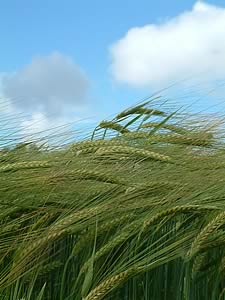| 2009-08-09
Final NIAB root assessments at all five HGCA second wheat Recommended List trial sites across the country confirm that national take-all infections are particularly high for the third successive year, putting 2009 second cereal plantings at particular risk.
At a GS75 average of 54 on the 1-100 scale, the 2009 take-all level falls almost exactly mid-way between the five year high of 61 recorded last year and the 46 of 2007, with 50% of sites having indexes of over 50 against 63% and 40% respectively (Table).
Table:
Take-all Levels at Second Wheat Variety Trial Sites 2005-2009
| |
2005 |
2006 |
2007 |
2008 |
2009 |
Average
Take-all Index (GS65-75) |
37 |
17 |
46 |
61 |
54 |
Take-all
Indexes of over 50
(% of
sites)
|
20 |
0 |
40 |
63 |
43 |
 |
With one site seeing an acute GS75 take-all index of well over 90 and all sites having moderate levels of more than 30, large amounts of inoculum will clearly be carried over this autumn across the country.
“Regular summer rainfall has prevented the loss of roots to take-all having as devastating effect as it would otherwise have done in many parts of the country,” notes study
co-ordinator, Rob Plaice of Monsanto. “Where conditions have been particularly dry, however, the intensity of infection pressure means that even crops receiving the best preventative take-all management are unlikely to escape some losses, albeit far lower than those in which early infections, in particular, have been less effectively controlled.
“This year’s take-all build-up is an inevitable consequence of the high levels of disease carried over from last year’s record infections combined with the very wet and difficult autumn,” he explains. “Interestingly, the three worst affected RL sites were all sown after mid-October, so delayed drilling without take-all seed treatment was clearly insufficient to cope with both the high inoculum levels and challenging seedbed conditions.
“The lessons for the coming autumn are clear,” Rob Plaice insists. “Regardless of sowing conditions, second wheats will be facing another season of high early take-all risk. So growers simply must prioritise managing this above everything else.
“Choose a variety proven to perform particularly well as a second wheat, treat it with a specialist take-all seed treatment, avoid sowing until at least the first week of October and do everything possible to achieve a fine but firm and well-drained seedbed,” he advises. “And remember that wheat after spring barley is at almost as much risk as wheat after wheat.
“Unlike other diseases, like the yellow rust causing concern to many this season, it’s vital to appreciate there’s virtually nothing you can do about take-all once you’ve got past crop establishment. If you fail to keep early infections sufficiently well at bay this autumn the the extent of your second wheat losses is entirely in the lap of the weather gods.”
If the coming season proves as problematic for take-all as the past three have been, Rob Plaice warns that most second wheat growers are likely to lose some yield to this damaging disease whatever they do. He stresses, though, that the difference between losing less than 0.5 t/ha and well over 2t/ha all lies in the effectiveness of autumn management.
 Spring Hopes for Stronger Winter Malting Barley Demand Spring Hopes for Stronger Winter Malting Barley Demand
 BCPC Congress and Exhibition 2009 BCPC Congress and Exhibition 2009
 Plan for Flexibility to Cope with Another Catchy Harvest Plan for Flexibility to Cope with Another Catchy Harvest
|


